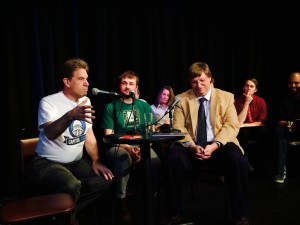One month ago, Minnesota’s largest city launched one of the state’s first general purpose open data portals. MNCOGI applauds the City of Minneapolis for this step in its journey toward transparency and citizen accessibility. MNCOGI also recognizes this opportunity to briefly evaluate the success of the launch of Minneapolis’ open data portal – both for the benefit of future iterations of the Minneapolis open data portal, and for the benefit of any other municipality that is considering an open data policy or portal.
The principal criterion to consider when evaluating the implementation of an open data policy – including Minneapolis’ open data portal – is the extent to which the policy’s implementation enables residents to access and use public government data. In applying this criterion to the open data portal, we will apply this criterion to several aspects of the portal, namely:
- Portal Usability: Minneapolis’ open data portal includes several features that enable residents to access and use government data, including dataset categorization, search, online data viewing in tabular and several graph formats, sorting and filtering of datasets, subscription to notification of dataset changes, and the ability to embed graphs in other websites. However, as has been noted by others, portions of the open data portal were unusable at the launch of the open data portal due to technical problems, which severely prevented users from accessing and using some datasets.
- Available Data: At launch, Minneapolis’ open data portal contained a respectable set of 35 data sets, including foundational datasets (administrative boundaries, street centerlines, locations of police & fire stations), datasets concerning city planning, city incident data (police incidents since 2010, reported and confirmed fires since 2012, 311 reports since 2010), NCR funding and contracts, air quality data, and more.
- Documentation of Data: Most of the above datasets contain little to no documentation concerning the nature of the dataset, the meanings of columns and values, or the means by which the data was collected. In the absence of this documentation, users will often lack context required to understand the meaning of data, which significantly reduces the ability of residents to use the available datasets.
- Data License: As noted on every page of the Minneapolis open data portal, all datasets on the portal carry a Creative Commons Attribution-ShareAlike 4.0 International License. By using a Creative Commons license to clarify and remind residents of their legal rights related to government data, the City is supporting the ability of residents to use available datasets to engage in public dialog and build tools using this data.
- Programmable Access: Minneapolis’ open data portal provides an Application Programmer Interface (API) for available datasets that, while complicated, is extensively documented. The availability of this API enables individuals and organizations to access and use available datasets for novel purposes, presentations, and applications.
The launch of Minneapolis’ open data portal represents a snapshot in the ever changing implementation of Minneapolis’ open data policy. Thus, it is important to also apply the above criterion to the City’s ability to change, and hopefully improve, it’s open data portal. For example, it is notable that while the open data portal experienced serious technical problems at its launch, the City was able to quickly fix these problems.
The culture change that is underway at the City of Minneapolis is commendable, but far from complete. Missing documentation is proof of the incomplete change, as the various city departments that steward the available datasets are also responsible for documenting those datasets, but have not yet prioritized that responsibility. However, the fact that many departments have chosen to actively participate in the open data policy does instill confidence that this culture change will continue, that more open data will be published, and that residents of Minneapolis will continue to gain more access and understanding of their municipal government.

